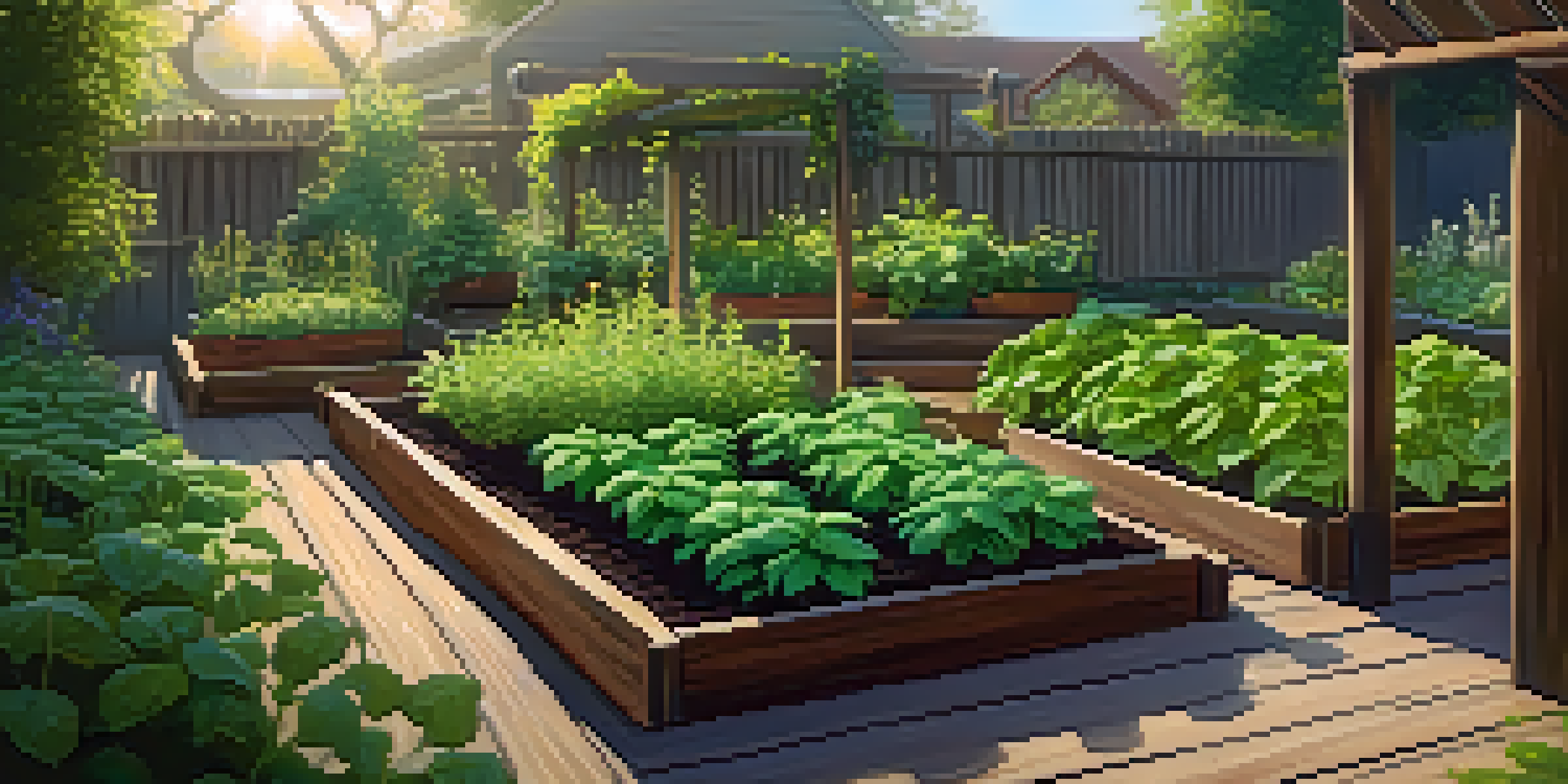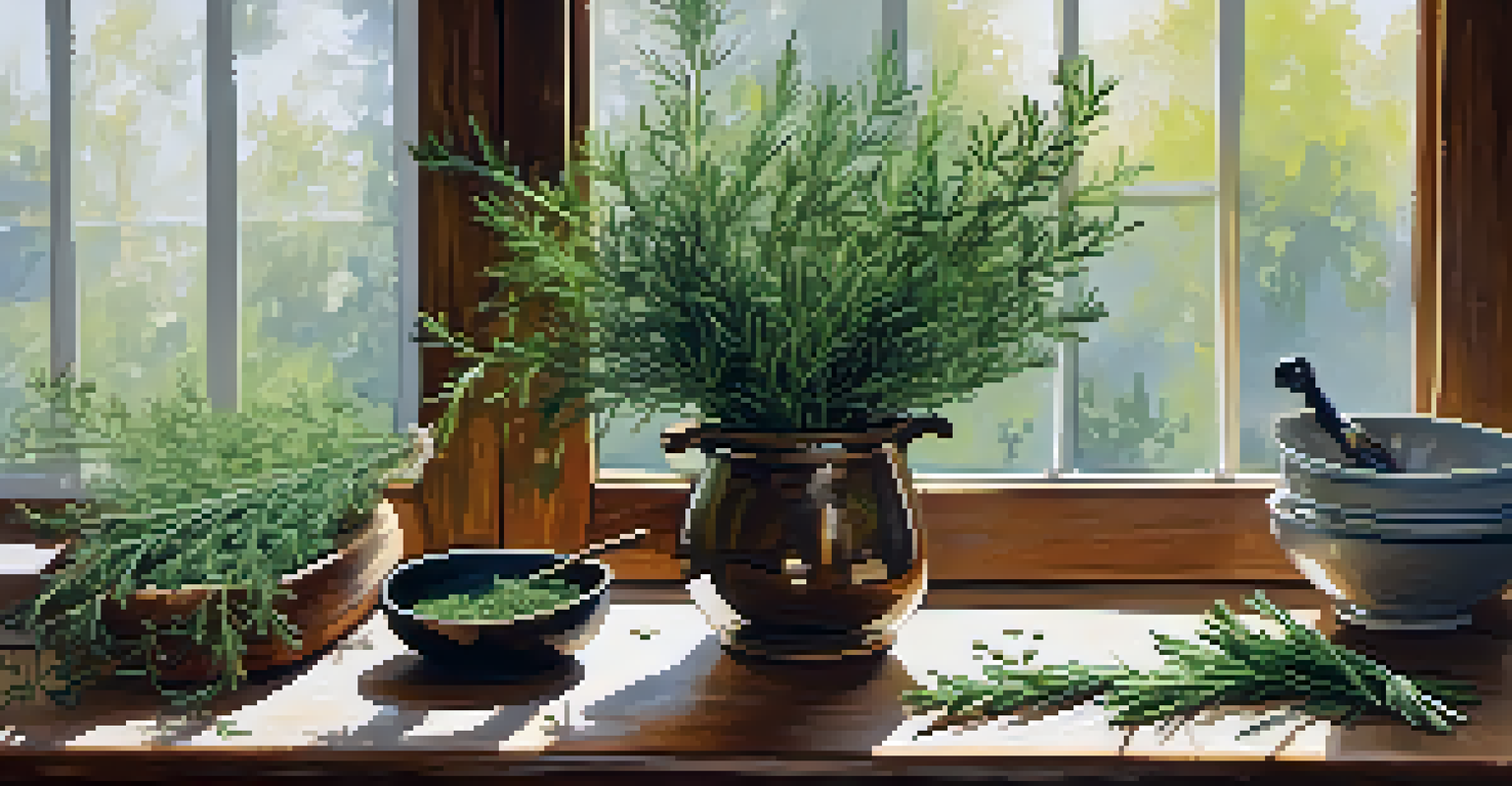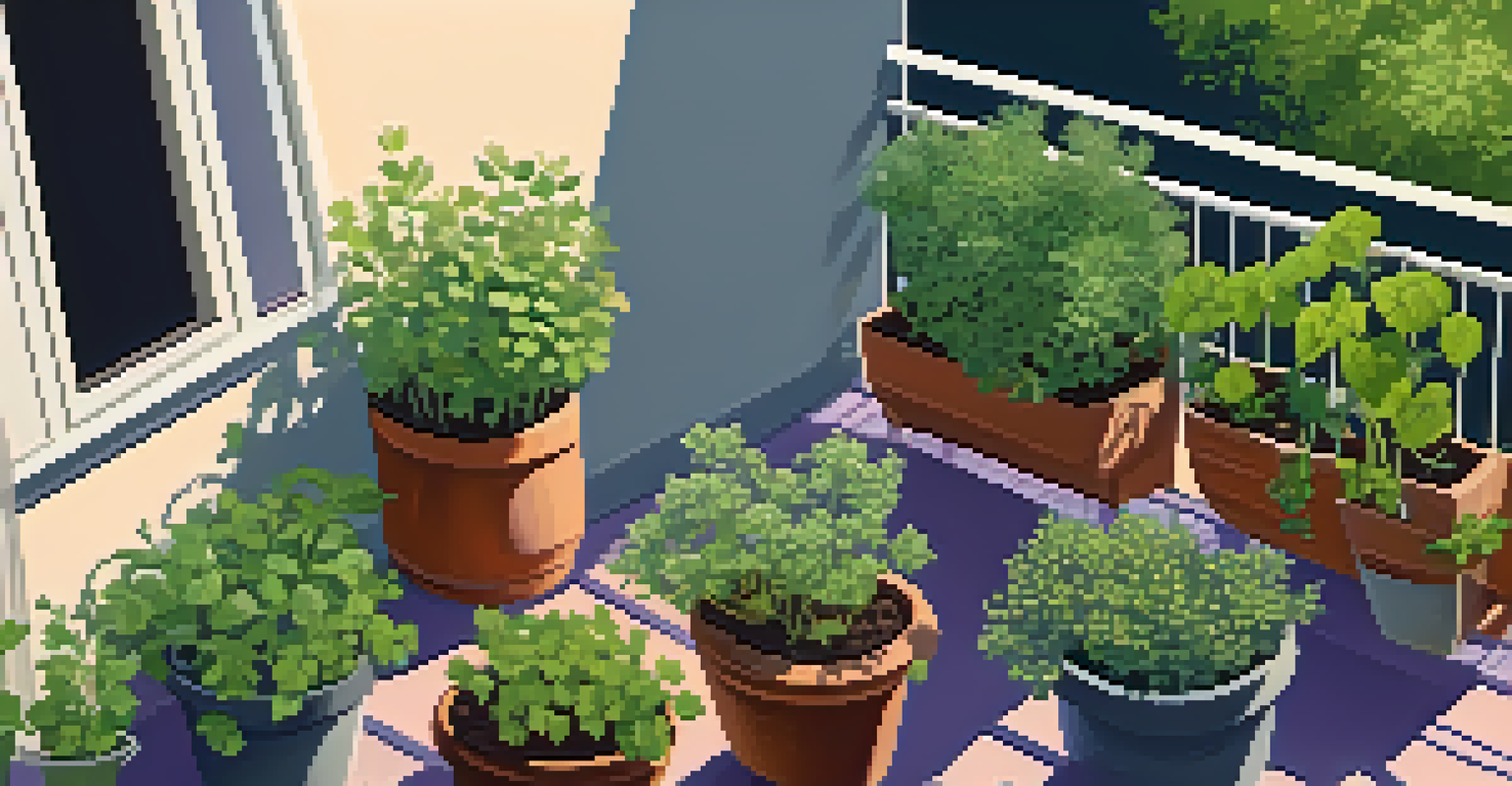Starting a Herb Garden: Best Practices for Success

Choosing the Right Location for Your Herb Garden
The first step in starting a successful herb garden is selecting the right location. Herbs generally thrive in spots that receive at least six hours of sunlight each day. Whether you have a sprawling backyard or a small balcony, ensure that your herbs will bask in the sun to promote healthy growth.
Herbs are the spice of life, adding flavor and fragrance to our meals and gardens.
In addition to sunlight, consider the proximity to your kitchen. Placing your herb garden close to where you cook can make it convenient for you to grab fresh ingredients while preparing meals. Plus, having easy access can motivate you to use fresh herbs more often, elevating your culinary creations.
Lastly, think about drainage. Herbs don’t like to sit in waterlogged soil, so a location with good drainage is essential. If your chosen spot doesn’t drain well, consider using raised beds or pots to ensure your herbs stay healthy and happy.
Selecting the Best Herbs for Your Garden
When starting your herb garden, it's crucial to choose herbs that suit your cooking preferences and climate. Popular options like basil, parsley, and mint are great choices for beginners due to their versatility and ease of growth. Think about which herbs you frequently use in your recipes to make the most of your garden.

Consider your local climate as well. Some herbs thrive in warmer temperatures, while others prefer cooler conditions. Researching which herbs grow best in your region will not only boost your chances of success but also help you enjoy a bountiful harvest.
Choose the Right Location
Selecting a sunny spot near your kitchen with good drainage is essential for a thriving herb garden.
Finally, think about whether you want to start from seeds or plants. Starting from seeds can be rewarding and cost-effective, while purchasing young plants can save time and ensure a more immediate harvest. Each option has its benefits, so choose what feels right for you.
Preparing the Soil for Planting Herbs
Soil preparation is a key factor in the success of your herb garden. Start by testing the soil to determine its pH and nutrient levels. Most herbs prefer a slightly acidic to neutral pH, so adjusting your soil accordingly can lead to healthier plants.
The best time to plant a tree was twenty years ago. The second best time is now.
Next, enrich your soil with organic matter, such as compost or well-rotted manure. This not only improves soil fertility but also enhances its structure, leading to better drainage and aeration. Healthy soil is the foundation of a thriving herb garden, so don’t skimp on this step!
Finally, loosen the soil to a depth of about 12 inches. This will allow your herbs to develop strong root systems, vital for their growth and stability. By ensuring your soil is well-prepared, you're setting the stage for a successful herb garden.
Planting Your Herbs: Timing and Techniques
Timing is everything when it comes to planting your herbs. Most herbs thrive when planted in the spring after the last frost date, while some, like parsley, can also be planted in the fall. Pay attention to local weather forecasts to optimize your planting schedule.
Once you’re ready to plant, space your herbs appropriately to allow for growth. Crowding can lead to competition for nutrients and sunlight, which may stunt their development. Follow spacing recommendations on seed packets or plant labels to ensure each herb has room to flourish.
Pick the Best Herbs for You
Choose herbs that match your cooking style and local climate to ensure a successful and enjoyable garden.
When planting, gently place the seeds or seedlings into the prepared soil and cover them lightly. Water them in carefully to avoid displacing the seeds. A little extra care during planting can make a significant difference in the health of your herb garden.
Watering and Fertilizing Your Herb Garden
Proper watering is crucial for your herbs to thrive. Most herbs prefer consistently moist soil but dislike soggy conditions. A good rule of thumb is to water when the top inch of soil feels dry, ensuring your herbs receive the right amount of hydration.
Fertilizing your herbs can help promote lush growth, but it's essential to do it wisely. Use an organic fertilizer with a balanced nutrient profile to avoid overwhelming your herbs. Too much fertilizer can lead to overly lush foliage at the expense of flavor, so moderation is key.
Additionally, consider using natural amendments like compost or fish emulsion for a gentle nutrient boost. These organic options can enhance soil health without the risk of burning your plants. By maintaining a careful watering and fertilizing routine, your herbs will reward you with vibrant growth.
Pruning and Harvesting Your Herbs Effectively
Pruning your herbs is an essential practice that encourages bushy growth and prevents them from becoming leggy. Regularly snipping off the tips of the plants promotes new growth and helps maintain a manageable size. This not only keeps your garden tidy but also ensures you have plenty of fresh herbs to enjoy.
When it comes to harvesting, timing is everything. For most herbs, the best time to harvest is in the morning after the dew has dried but before the heat of the day sets in. This helps preserve the essential oils that give herbs their flavor and aroma, making your culinary creations even more delicious.
Water and Fertilize Wisely
Maintain a careful watering and fertilization routine to promote healthy growth and flavorful herbs.
Remember to harvest strategically; taking only a portion of the plant allows it to continue growing. This way, you can enjoy fresh herbs throughout the season without harming the plant. With proper pruning and harvesting techniques, your herb garden will continue to thrive.
Common Pests and Problems in Herb Gardening
Like any garden, herb gardens can face their fair share of pests and problems. Common culprits include aphids, spider mites, and whiteflies, which can munch on your plants if left unchecked. Keeping an eye on your herbs and addressing issues early can prevent larger infestations.
One effective way to manage pests is to introduce beneficial insects like ladybugs or lacewings, which prey on these harmful bugs. Additionally, you can use insecticidal soap or neem oil as organic solutions to deter pests without harming your plants or the environment.

Moreover, maintaining good garden hygiene—like removing dead leaves and debris—can help prevent diseases and pests from taking hold. By staying proactive and responsive to issues, you can keep your herb garden healthy and flourishing.